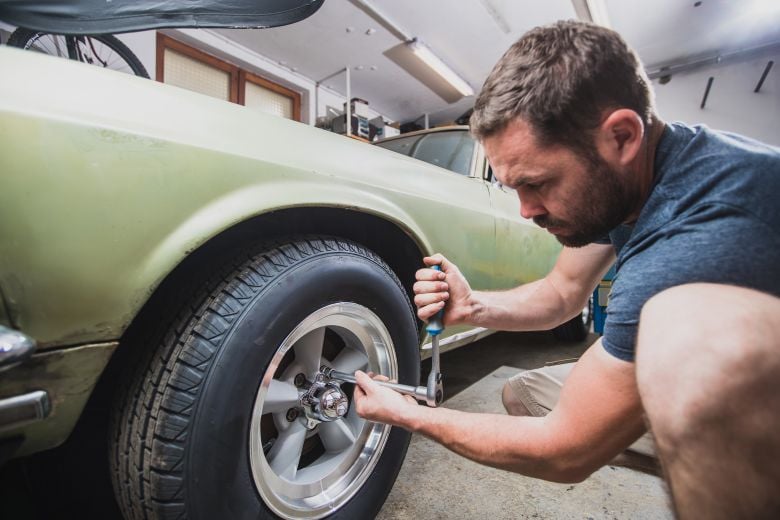
July Is Right to Repair Month: Here's What That Means for You
- Vehicle Maintenance, PEAK Squad
- PEAK
- July 8, 2025
Learn about the right-to-repair movement and why it matters to you.
The right-to-repair movement has made some impressive gains over the past few years. A bunch of states have passed right-to-repair laws, making it easier to access the information and services you need to save money when fixing big-ticket items.
In another major development, federal lawmakers reintroduced the Right to Equitable and Professional Auto Industry Repair (REPAIR) Act in February 2025 after an earlier effort to pass the bill fizzled out. The REPAIR Act deals specifically with automobiles, which are the main thrust of our discussion here.
In this post, we’ll take a look at:
- What the right-to-repair movement is and why it matters to you
- How planned obsolescence and manufacturer practices impact your repair choices
- Why cars are a central issue in the right-to-repair conversation
- What the REPAIR Act aims to do for vehicle owners and independent mechanics
- What states support right-to-repair legislation, and how the U.S. compares globally
- How you can support the REPAIR Act and get involved during Right to Repair Month


What is right to repair?
"Right to repair" is a loosely organized movement that supports better consumer access to information, instructions, and repair services for higher-cost products. A factor in the consumer advocacy landscape since the early 1990s, the right-to-repair movement has made a lot of headway in the 21st century amid growing backlash to a controversial practice known as "planned obsolescence."
Put simply, planned obsolescence involves engineering products so they become outdated or fail within a short time. Its main goal is to force consumers to buy new replacements rather than upgrade or fix a product they already own.
Planned obsolescence has become a thorny issue in consumer electronics, home appliances, and apparel. It isn't really a part of today's auto engineering or manufacturing practices, but advocates have included motor vehicles in their right-to-repair efforts for two main reasons:
- Vehicles are expensive to buy and maintain, and consumers feel they deserve more value for the money they spend.
- Some manufacturers have adopted service practices that essentially force consumers to have their vehicles serviced at dealerships instead of choosing their own technicians or service centers.
As the movement has gained traction, The Repair Association has emerged as the largest right-to-repair advocacy group in the United States. The Repair Association seeks to:
- Make it easier for consumers and independent professionals to access technical documentation, repair information, and the tools and equipment they need to fix products without manufacturer involvement
- Restrict or ban business practices involving planned obsolescence
- End manufacturing and business policies that prevent consumers from modifying or fixing products themselves
The Repair Association has a motto: "You bought it, you should own it." That sentiment is a tidy summary of the organization's goals.


How does the right-to-repair movement affect car owners?
Auto manufacturers engage in some practices that right-to-repair advocates find questionable. These include:
- Making vehicle systems more and more dependent on tech packages that only manufacturers can service, while manufacturers hide behind cybersecurity and data privacy claims to justify their actions
- Outfitting vehicles with systems and components that must be diagnosed and serviced with equipment available only at dealerships
- Including clauses that limit or cancel your warranty protections if you attempt to repair your vehicle yourself, or if you take it to an independent technician
- Restricting the use of aftermarket products or modifications under threat of warranty nullification
These policies create a kind of vertical integration that gives auto manufacturers growing control over the manufacturing, sales, and service categories. Right-to-repair advocates believe this unfairly limits consumers' options while making it harder and harder for independent repair shops to compete with dealership-based service centers.
For another perspective, listen to PEAKSquad members Alex Taylor and Emily Reeves explain their own takes on right-to-repair in the auto industry.
Right to repair legislation: What it is and how it works
The Repair Association and many other similar groups have set their sights on government policy as a means of winning the right-to-repair battle. Thanks to their efforts, many countries around the world have adopted right-to-repair laws, including the United States.
While right-to-repair laws vary widely in their content and scope, they generally aim to:
- Force manufacturers to offer product documentation, repair manuals, and replacement parts at reasonable prices
- Ban proprietary forms of software or firmware that make it functionally impossible for an independent technician to repair a product
- Level the playing field so that the repair services market isn't tilted in favor of product manufacturers at the expense of their competitors
According to a February 2025 analysis by the Public Interest Research Group (PIRG), all 50 states have at least considered right-to-repair laws since 2017. Seven states have passed at least one piece of right-to-repair legislation since 2020, with a total of nine new laws hitting state law books since that time.
Most of these statutes cover products like electric wheelchairs, consumer electronics, and home appliances. However, PIRG also reports that 24 states have active right-to-repair proposals in various stages of development, with automobiles specifically in the sights of states including Hawaii, Kansas, Maine, and Maryland.


The REPAIR Act: A potential policy win for car owners and independent mechanics
While state-level right-to-repair laws can certainly help consumers, many active proposals specifically exclude automobiles. According to PIRG, right-to-repair legislation that covers "everything but cars" is in the works in Missouri, New Jersey, Vermont, and Virginia.
Many advocates insist that federal right-to-repair legislation is the only effective way to give car owners the consistent and predictable protections they deserve. This is exactly what the REPAIR Act intends to achieve.
A bipartisan bill with broad support, the REPAIR Act was first introduced in 2023. However, it did not advance beyond the committee stage before Congress dissolved, leaving it facing an uncertain future.
Fortunately for consumers, federal lawmakers revived the REPAIR Act in 2025. The current iteration of the proposed law takes aim at four main goals:
- To guarantee that vehicle owners, independent auto repair businesses, and aftermarket auto parts manufacturers have access to the software, diagnostics tools, and specialized repair equipment they need
- To protect market competition by preventing manufacturers from securing a monopoly on auto repair information and services
- To safeguard consumers' data privacy and the security of their in-vehicle technologies without giving manufacturers unfair control over electronic and networked vehicle systems
- To ensure consumers and independent repair professionals have the full capacity to make vehicles safe and compliant with all federal rules and regulations
The revived REPAIR Act will continue to make its way through the 119th session of Congress. It appears to have a solid chance of becoming federal law, but that isn't guaranteed at this point.
How you can help
With July being Right to Repair Month throughout the United States, it's a great time to get involved. Here are three easy actions you can take to support the REPAIR Act on its journey through Congress:
- Visit the REPAIR Act advocacy website and spend 30 seconds to join thousands of others in voicing your support for the bill
- Call or write to your Congressional representative's office, urging them to vote in favor of the bill
- Use the hashtags #RightToRepair and/or #RepairAct to make right-to-repair issues more visible on social media
For more, visit the Auto Care Association's National Right to Repair website and follow REPAIR Act updates with the Speciality Equipment Market Association.

